Spello, the town of flowers
While staying at Gallano Resort, a trip to Spello is really worth considering. Nestled on a slope of Monte Subasio, Spello was constructed from the local limestone, which takes on a lovely pinkish hue around sunset. Perfect to explore in half a day, Spello is located only 17 kilometers from Gallano and is conveniently close to other lovely destinations, such as Collepino, Assisi, Perugia, Rasiglia, and other surrounding towns.
Spello is listed among the most beautiful villages in Italy and offers a rich blend of art and history. Strolling through the small historic center, you will retrace the steps of the ancient Umbrians and discover impressive remnants of the Roman, Medieval, and Renaissance times.
THIS ANCIENT MEDIEVAL TOWN IS ALSO KNOWN AS THE TOWN OF FLOWERS
Spello brims with flowers all year round, especially in spring and summertime, when countless flowers decorate its lovely stone houses and winding lanes. In June and July, the town becomes a true visual treat as locals decorate their balconies, windows, alleys, and doorways with colorful blooming plants during the event called “Flowering Windows, Balconies, and Alleys”.
Every year in June, the nearly 2000 people of Spello celebrate the Feast of Corpus Domini by covering the streets with up to 2 km of flower carpets and floral paintings drawing inspiration from religious motifs. They give shape to the gorgeous Infiorate, the result of a meticulous and passionate work that can take weeks or even months.
THE HISTORY OF SPELLO
The roots of Spello can be traced back to the ancient Umbrians. Later defined as “Splendidissima Colonia Julia” (“Most Beautiful Julia Colony”) by Emperor Augustus, Spello boasts an invaluable architectural heritage, such as the Roman city walls that stretch out for almost 1900 meters and are among the best preserved in Italy, and the remains of the Roman theater, amphitheater, and thermal baths.
Three beautiful Roman gates still serve as the main entrance to the town center: Porta Consolare, the main gateway to Spello; the imposing Porta Urbica, part of the ancient city wall and dominated by a small watchtower; and Porta Venere, an Augustan-era gate named after the nearby temple of Venus, traces of which were found in the gardens of “Villa Fidelia”.
ART IN SPELLO: THE TOWN OF PINTURICCHIO
The Perugian painter Bernardino di Betto, or “Pinturicchio”, was a master of the Umbrian school together with Raphael and Pietro Perugino and is closely associated with Spello, where he created splendid masterpieces. Nicknamed “Pinturicchio” (“The Little Painter”) because of his small stature, he was contemptuously regarded as less skilled than the “divine painter”, Pietro Perugino.
A cycle of frescoes by Pinturicchio can be found in the Cappella Baglioni, a side chapel located inside the Church of Santa Maria Maggiore and commissioned by a prelate of the Baglioni family in 1500. On the left wall is a signed self-portrait shown in three-quarter view, where Pinturicchio depicted himself with a sunken, almost sorrowful look. On the right wall is the Dispute in the Temple. In the fresco, note the fourth character on the right, near Saint Joseph, holding a scroll in his hands that reads “Pinturicchio”. In front of the fresco, you cannot fail to notice precious Maiolica floor tiles from Deruta dating back to 1566, now protected by a glass case. Other masterpieces can be found in the Church of Sant’Andrea, including the Madonna Enthroned with Child and Saints, painted by Pinturicchio and other artists.
